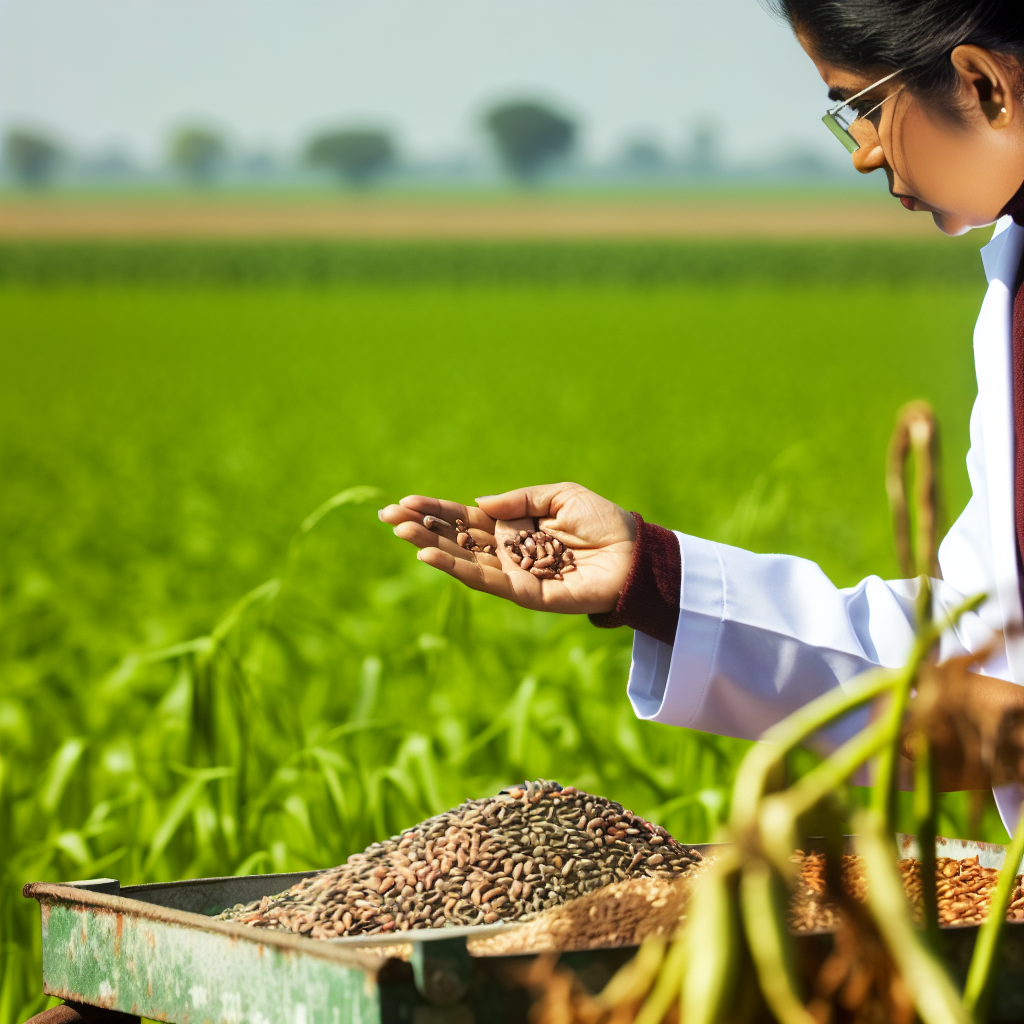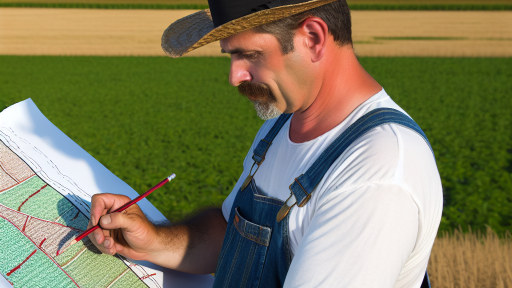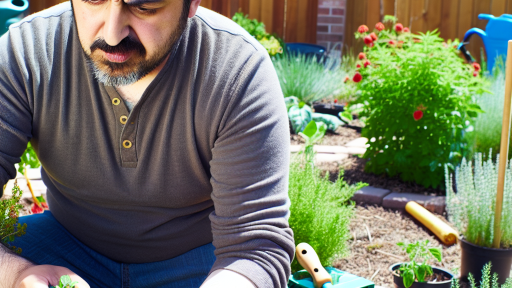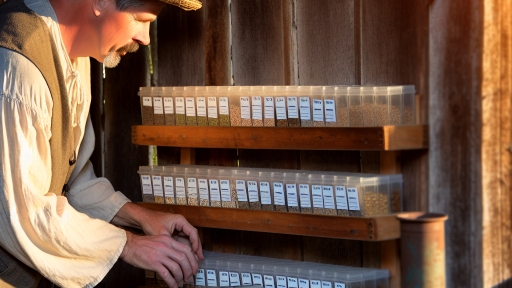Understanding the Importance of Seed Selection for Crop Yield
Significance of High-Quality Seeds
High-quality seeds are fundamental for successful crop production.
They enhance germination rates and uniformity in crop establishment.
Moreover, strong seeds contribute to improved resilience against diseases.
Impact on Crop Yield
Seed selection directly influences crop yield potential.
Choosing the right seeds can maximize nutrient uptake and water efficiency.
This choice also affects the overall growth cycle of crops.
Diversity and Adaptation
Planting diverse seed varieties promotes stronger ecosystems.
Diversification helps mitigate risks associated with pests and diseases.
This adaptation increases the likelihood of higher yields over time.
Economic Considerations
Investing in quality seeds can lead to higher profit margins for farmers.
Higher yields translate to better returns on investment.
Additionally, select seeds tailored to specific markets may boost sales.
Environmental Impact
Careful seed selection reduces the need for chemical interventions.
Healthy plants can naturally resist pests and diseases.
Thus, this practice minimizes negative environmental effects.
Transform Your Agribusiness
Unlock your farm's potential with expert advice tailored to your needs. Get actionable steps that drive real results.
Get StartedFactors to Consider When Choosing Seeds
Climate and Weather Conditions
Your local climate greatly influences seed selection.
Specific seeds perform better in particular temperature ranges.
Additionally, consider rainfall patterns before choosing seeds.
Some seeds are more drought-resistant than others.
Check frost dates to avoid cold-sensitive varieties.
Soil Type and Quality
The type of soil affects seed performance directly.
Evaluate soil pH and nutrient levels before planting.
Different seeds thrive in various soil textures.
Moreover, organic matter content helps in seed selection.
Pest and Disease Resistance
Choose seeds with documented pest resistance attributes.
Disease-resistant varieties can save time and resources.
Consult local extension services for expert recommendations.
Additionally, look for integrated pest management advice.
Growing Season Duration
The time to maturity varies among seed types.
Select seeds that can mature within your growing season.
Additionally, consider late planting options for extended seasons.
Some varieties can produce multiple harvests in one season.
Yield Potential
Research the expected yield of different seed varieties.
Higher yielding seeds often require specific care.
Assess market prices to gauge economic viability.
Also, consider the value of heirloom versus hybrid seeds.
Types of Seeds
Hybrid Seeds
Hybrid seeds result from cross-pollination between different plant varieties.
This process produces seeds with specific traits, such as disease resistance and high yields.
Farmers often prefer hybrid seeds for their robust performance in various conditions.
Showcase Your Farming Business
Publish your professional farming services profile on our blog for a one-time fee of $200 and reach a dedicated audience of farmers and agribusiness owners.
Publish Your ProfileHowever, these seeds can be more expensive than other types.
They also require purchasing new seeds each season, as they are not typically saved for replanting.
Heirloom Seeds
Heirloom seeds are traditional varieties passed down through generations.
They are open-pollinated, meaning they can be saved and replanted each year.
Many gardeners choose heirloom seeds for their unique flavors and diverse plant characteristics.
These seeds often showcase greater resilience to local pests and diseases.
However, heirloom varieties may produce smaller yields compared to hybrids.
Open-Pollinated Seeds
Open-pollinated seeds come from plants that naturally pollinate without human intervention.
Farmers can save these seeds and use them for future crops.
This practice encourages biodiversity and helps preserve seed varieties over time.
Open-pollinated seeds can adapt well to local growing conditions.
Although they might not yield as much as hybrids, they provide sustainable options for growers.
See Related Content: Organic Seed Saving Techniques For Farmers
Assessing Local Climate and Soil Conditions
Understanding Climate Factors
Climate significantly influences seed selection and crop yield.
First, analyze temperature patterns throughout the growing season.
Consider both average and extreme temperatures.
Next, evaluate rainfall distribution across the year.
This includes total rainfall and frequency of dry spells.
Furthermore, assess frost dates to determine growing seasons.
Knowing first and last frost dates helps in selecting appropriate seeds.
Studying Soil Composition
Soi health plays a vital role in crop productivity.
Start by testing soil pH levels for optimal nutrient availability.
Most crops prefer a slightly acidic to neutral pH.
Next, examine soil texture, such as clay, sandy, or loamy soils.
Different crops thrive in varying soil textures.
Additionally, analyze organic matter content for nutrient retention.
Organic matter enhances soil structure and fertility.
Considering Local Ecological Conditions
Take into account local flora and fauna in your area.
Native plants can indicate suitable growing conditions.
Next, observe pest and disease patterns in your locality.
This can inform pest-resistant seed choices.
Furthermore, consider crop rotation practices from local farmers.
Learning about successful rotations helps in maintaining soil health.
Utilizing Local Knowledge and Resources
Engage with local agricultural extension services for expertise.
These services can provide tailored advice for your area.
Additionally, consult with experienced local farmers for seed recommendations.
Networking can lead to sharing valuable insights and best practices.
Also, consider joining community farming groups for collective knowledge.
Participating in these groups enhances your understanding of local conditions.
Delve into the Subject: Best Edible Plants for Sustainable Farming
Showcase Your Farming Business
Publish your professional farming services profile on our blog for a one-time fee of $200 and reach a dedicated audience of farmers and agribusiness owners.
Publish Your ProfileSelecting Seeds for Maximum Crop Yield
Evaluating Seed Quality
Assessing seed quality is vital for successful crop production.
High-quality seeds often lead to higher germination rates.
They also exhibit better disease resistance, which is essential for healthy plants.
Let’s delve into some key factors to consider when evaluating seed quality.
Understanding Germination Rates
Germination rates reflect how many seeds will sprout and grow.
Seeds with high germination rates contribute to better yields.
Testing seeds for germination can provide valuable insights.
Consider the following methods for testing germination:
- Using a moist paper towel to encourage sprouting.
- Planting seeds in controlled environments to monitor growth.
- Consulting seed catalogs for germination statistics.
Keep in mind that freshness also affects germination rates.
Assessing Disease Resistance
Disease resistance in seeds is crucial for maintaining healthy crops.
Seeds that resist common diseases can save farmers time and money.
Evaluate disease resistance by looking for resilient traits in seeds.
Research varieties known for strong disease resistance.
Some key diseases to consider include:
- Fungal infections that can impact root systems.
- Bacterial diseases that may affect foliage.
- Viral infections that reduce overall yield.
Moreover, investing in certified disease-resistant seeds pays off in the long run.
Factors Influencing Seed Selection
Several factors influence seed selection beyond germination and disease resistance.
Consider the following aspects when choosing seeds:
- Climate adaptability of seed varieties.
- Growth duration and required care levels.
- Potential yield and market demand for produce.
All these factors will collectively enhance your crop yield potential.
Explore Further: Beginner’s Guide to Mushroom Farming on Small Farms
The Role of Seed Treatments and Coatings
Importance of Seed Treatments
Seed treatments protect seeds from pests and diseases.
They enhance germination rates under varying conditions.
In addition, these treatments improve crop establishment.
Farmers often use them to boost early growth vigor.
Common Seed Coatings
Seed coatings can provide multiple benefits for crops.
Common coatings include insecticides, fungicides, and fertilizers.
Each coating serves a specific purpose in crop development.
Benefits of Coatings and Treatments
Seed treatments boost plant resilience against pathogens.
They also facilitate better nutrient uptake during germination.
Moreover, coatings can help retain moisture for seeds.
This results in improved plant health and higher yields.
Considerations When Selecting Treatments
Choosing the right treatment is crucial for success.
Consider the specific pests and diseases prevalent in your area.
Additionally, evaluate the crop type and its growth cycle.
It’s important to balance cost with expected benefits.
Application Methods
Farmers have various methods to apply seed treatments.
Coating seeds can be done at home or commercially.
Ensure that the application technique is uniform for effectiveness.
Proper handling and storage of treated seeds are essential.
Gain More Insights: Maximizing Crop Yields With Container Gardening

Using Technology and Data in Seed Selection
The Role of Data Analytics
Data analytics plays a vital role in modern agriculture.
Showcase Your Farming Business
Publish your professional farming services profile on our blog for a one-time fee of $200 and reach a dedicated audience of farmers and agribusiness owners.
Publish Your ProfileIt helps farmers make informed decisions on seed selection.
By analyzing historical yield data, farmers identify the best-performing seeds.
Moreover, they can evaluate factors like soil health and weather patterns.
This information leads to better planting strategies.
Precision Agriculture Techniques
Farmers utilize precision agriculture to optimize their crop yields.
This approach leverages technology like GPS and soil sensors.
As a result, farmers can apply inputs with greater accuracy.
Precision tools also help in monitoring plant health throughout the season.
This timely information allows for rapid adjustments in farming practices.
Genetic Information and Breeding Techniques
Advancements in genetic research have transformed seed breeding.
Farmers now have access to genetically modified seeds with desirable traits.
These traits may include pest resistance or drought tolerance.
Understanding this genetic information helps farmers select seeds that thrive in their regions.
Consequently, this leads to increased crop resilience and yield.
Collaborative Platforms for Farmers
Collaboration among farmers enhances the seed selection process.
Online platforms facilitate sharing of data and experiences.
Farmers can compare results and discuss best practices.
Such exchanges provide valuable insights into seed performance.
In turn, this fosters community growth and knowledge sharing.
Best Practices for Sourcing Seeds from Reputable Suppliers
Researching Potential Suppliers
Begin by researching potential seed suppliers carefully.
Look for suppliers with a strong reputation in the agricultural community.
Online reviews and testimonials offer valuable insights.
Additionally, check for any certifications or quality assurances.
Understanding Seed Quality
Always prioritize seed quality over price.
High-quality seeds result in better crop yields and resistance to diseases.
Request detailed information about seed origin and variety.
Certified seeds come with guarantees about their performance.
Inquiring About Germination Rates
A reputable supplier should provide germination rates for their seeds.
Compare these rates among different suppliers.
Higher germination rates indicate healthier seeds.
Ask for data from independent testing labs for verification.
Evaluating Customer Support
Good customer support can enhance your buying experience.
Reach out to suppliers with questions to assess their responsiveness.
A reliable supplier should be willing to share knowledge and advice.
Consider whether they offer ongoing support after the sale.
Examining Shipping and Handling Practices
Inquire about a supplier’s shipping methods and handling practices.
Seeds should be packaged to avoid damage during transport.
Prompt shipping reduces the risk of compromised seed quality.
Confirm that they include tracking options for your order.
Building Relationships with Suppliers
Establishing a relationship with your seed supplier is beneficial.
Showcase Your Farming Business
Publish your professional farming services profile on our blog for a one-time fee of $200 and reach a dedicated audience of farmers and agribusiness owners.
Publish Your ProfileRegular communication helps you stay informed about new varieties.
Additionally, strong relationships can lead to better pricing and terms.
Networking with other farmers can also lead to trustworthy recommendations.
Strategies for Crop Rotation and Diversity in Seed Selection
Importance of Crop Rotation
Crop rotation involves changing the types of crops grown in a specific area each season.
This practice enhances soil fertility by preventing nutrient depletion.
Additionally, crop rotation helps control pests and diseases effectively.
It disrupts the lifecycle of pests that thrive on specific crops.
Farmers can reduce dependency on chemical pesticides through crop rotation.
Selecting Diverse Seed Varieties
Selecting a variety of seeds increases resilience against environmental stresses.
Diverse crops can adapt to varying weather conditions and soil types.
Furthermore, a mix of seed varieties boosts overall yield potential.
Farmers should look for local seed varieties that are well-suited to the region.
Planting heirloom seeds can also enhance genetic diversity in crops.
Integrating Cover Crops
Cover crops play a vital role in promoting soil health.
They prevent soil erosion and manage moisture levels effectively.
Additionally, cover crops improve soil structure and fertility.
Choosing legumes as cover crops adds nitrogen back into the soil.
Farmers can rotate cover crops with main crops to optimize benefits.
Maximizing the Use of Local Knowledge
Utilizing local agricultural knowledge can inform seed selection.
Farmers can consult with community groups for insights on best practices.
Workshops that share experiences can enhance skill sharing and techniques.
Local experts often understand the unique challenges of the area.
Incorporating this knowledge into farming strategies boosts yield potential.
Case Studies: Successful Seed Choices from Experienced Farmers
Innovative Choices by Sarah Thompson
Sarah Thompson specializes in heirloom tomatoes.
She selects seeds based on flavor and disease resistance.
Ultimately, these choices result in higher market demand.
Advanced Techniques by Michael Durant
Michael Durant grows various organic vegetables.
He incorporates cover crops to improve soil health.
This practice enhances seed viability and crop yield.
Success with Regional Adaptation by Elena Rodriguez
Elena Rodriguez focuses on region-specific varieties.
She identifies seeds that thrive in her local climate.
Consequently, her crops consistently produce high harvests.
Utilizing Technology by James Whitaker
James Whitaker uses precision agriculture tools.
He analyzes soil health to better choose seed types.
This data-driven method boosts his overall production.
Sharing Knowledge with Community Workshops
All four farmers participate in community education programs.
They share best practices and ideas on selecting seeds.
This collaboration helps local farmers improve their yields.
Additional Resources
Micro Farming: Growing Wheat in Your Backyard : 4 Steps (with …
Leaping Into Small-Scale Grain Production
Showcase Your Farming Business
Publish your professional farming services profile on our blog for a one-time fee of $200 and reach a dedicated audience of farmers and agribusiness owners.
Publish Your Profile



